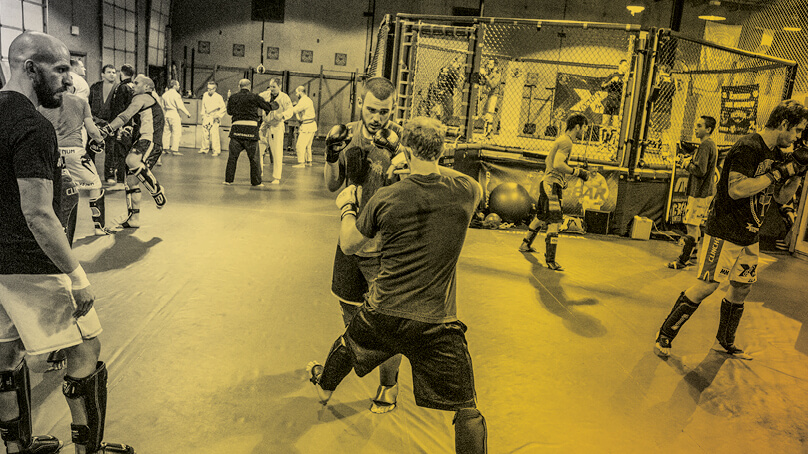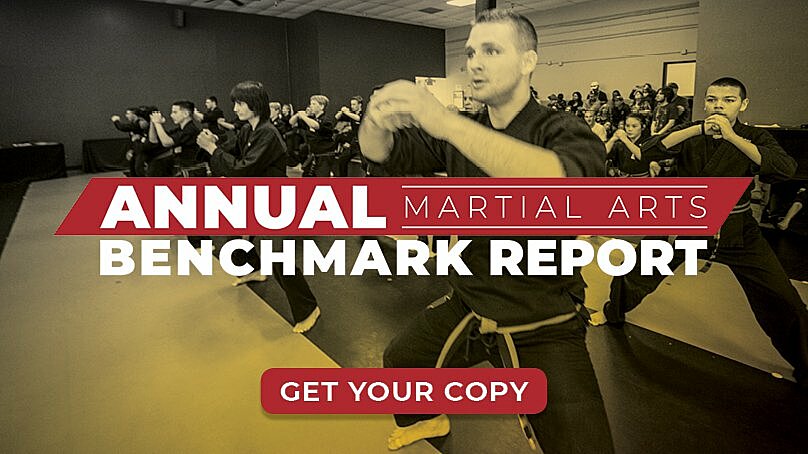Martial Arts Benchmark Report Retrospective: Key Findings

The growth and popularity of Martial Arts has spiked in the last few years. We connect with thousands of Martial Arts schools every year and it is always shocking how unique each school is from one to the next. For our annual Martial Arts Benchmark Report we survey hundreds of martial arts school owners in an effort to find out what is working and what is not. Each year the findings give us a few surprises, but more importantly a few key takeaways that almost any martial arts school can implement at their facility in order to become a stronger business.
This year, a few things stuck out to us from our Martial Arts Benchmark Report. Check out the videos below and read on to find out more.
Don’t forget to download your free copy of the full Martial Arts Benchmark Report!
Belt Testing Frequency
Martial arts belts are meant to signify knowledge, confidence and practice, and dedication to the other. Our data shows that 54% of leading schools test every one to two months, while 33% of leading schools test every three to four months. The main concern of people who debate what constitutes a student promotion always seems to come down to the practitioners who fear that the legitimacy of their belt levels and overall art will be watered down by teachers who are quick to promote students. While Zen Planner doesn’t take a specific position on this topic and we know the debate is not likely to end anytime soon, we still want to share data with you every time.
Adult Focus
According to our data, 39% of martial arts school students are adults, meaning there’s a great opportunity to increase the number of adults that come to your business. First, consider having a marketing plan specific to attracting more adults. Second, consider hosting some events like “bring a parent to class” day.
Belt Testing Criteria
Maybe more hotly debated than testing frequency is the testing criteria used for belt promotion. The most common criteria used is skill-based, while time and attendance are close followers. And because time and attendance are heavily used, it’s really important to have a system in place at your school, where you can effectively and reliably track attendance. How you weight the importance of these three criteria is your decision.
That’s a Wrap
Those are the key takeaways we’ve discovered from our most recent Martial Arts Benchmark Report. Download the full benchmark report below to look at all of the responses and see what separates the top performing schools from those that are struggling.
We’ll be gathering data for our 2019 Benchmark Reports in the coming months. If you’d like to participate in comment below or send us an email at marketing@zenplanner.com. Any feedback you have on how to improve our survey and report in future years is also appreciated.
Interested in learning what top martial arts teachers around the world are doing to run financially strong schools? Get your free copy of our Martial Arts Benchmark Report.

I’m Coach Kelli, a devoted CrossFit gym owner with 15 years of experience managing my facility, along with owning yoga studios and wellness centers. Beyond the fitness world, I have a passion for cooking, cherish moments with my children and family, and find joy in spending time outside. Having experienced the highs and lows, I’m dedicated to leveraging my expertise to help you grow and succeed on your fitness journey.

I’m Coach Kelli, a devoted CrossFit gym owner with 15 years of experience managing my facility, along with owning yoga studios and wellness centers. Beyond the fitness world, I have a passion for cooking, cherish moments with my children and family, and find joy in spending time outside. Having experienced the highs and lows, I’m dedicated to leveraging my expertise to help you grow and succeed on your fitness journey.








